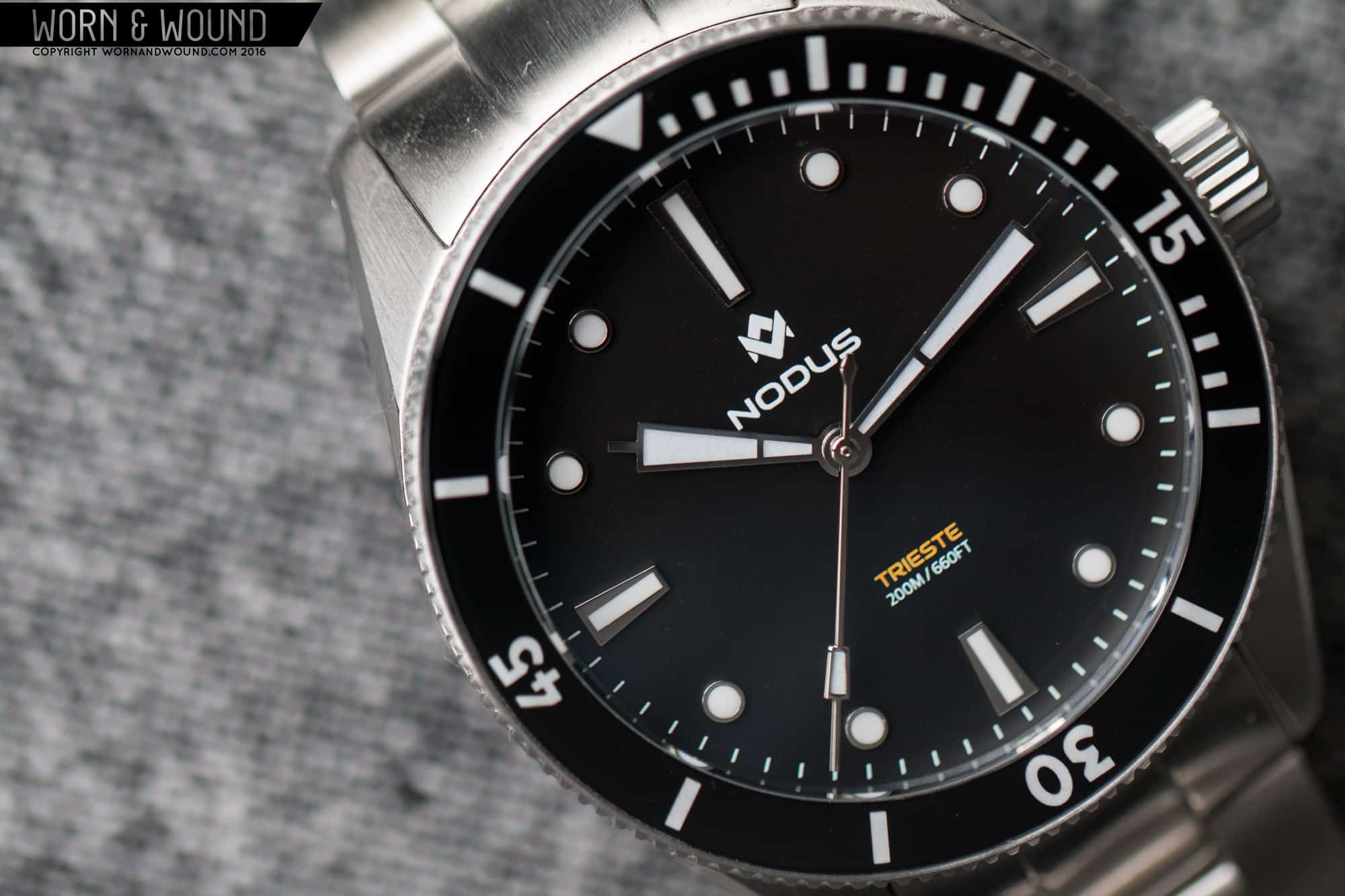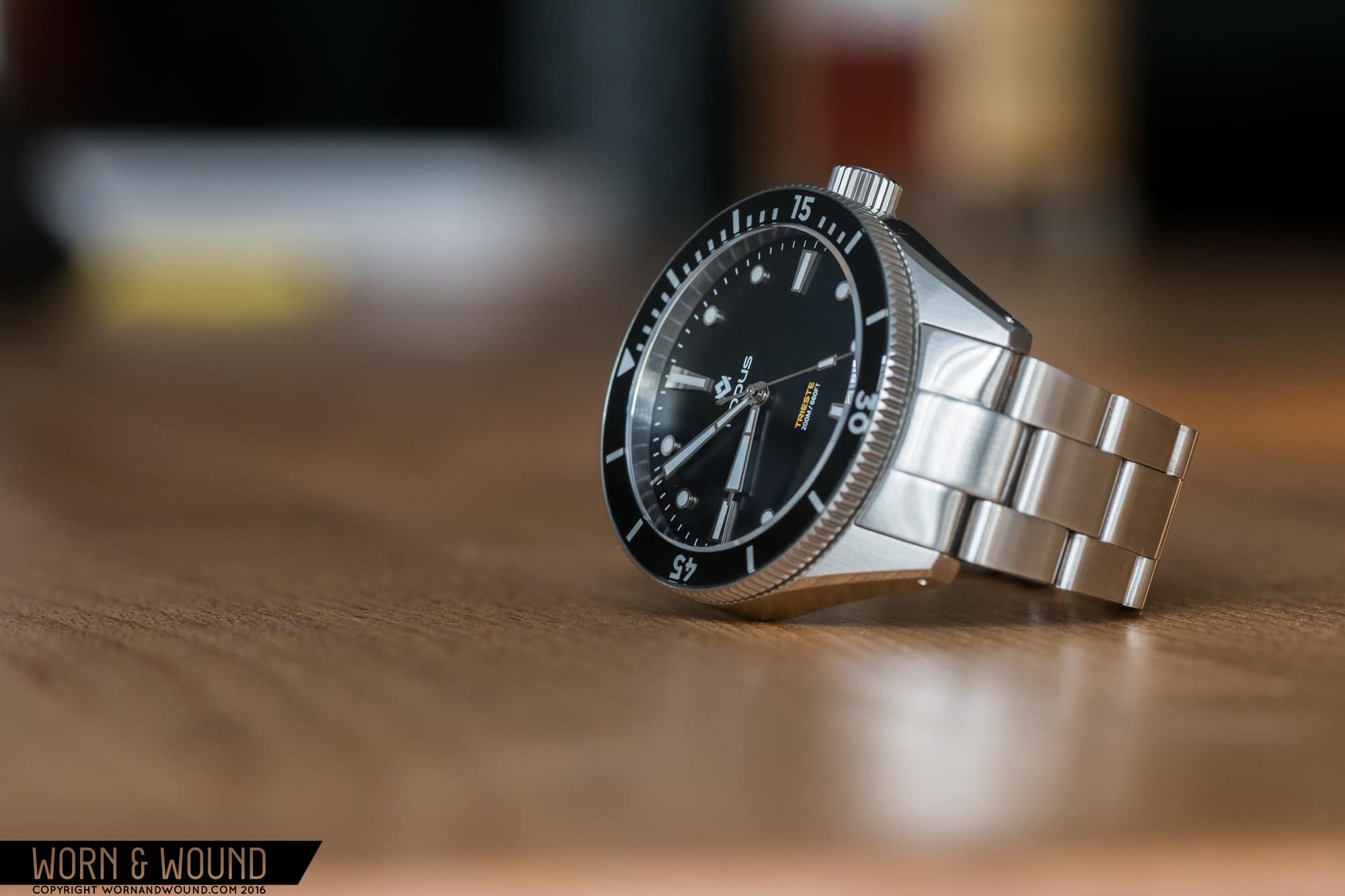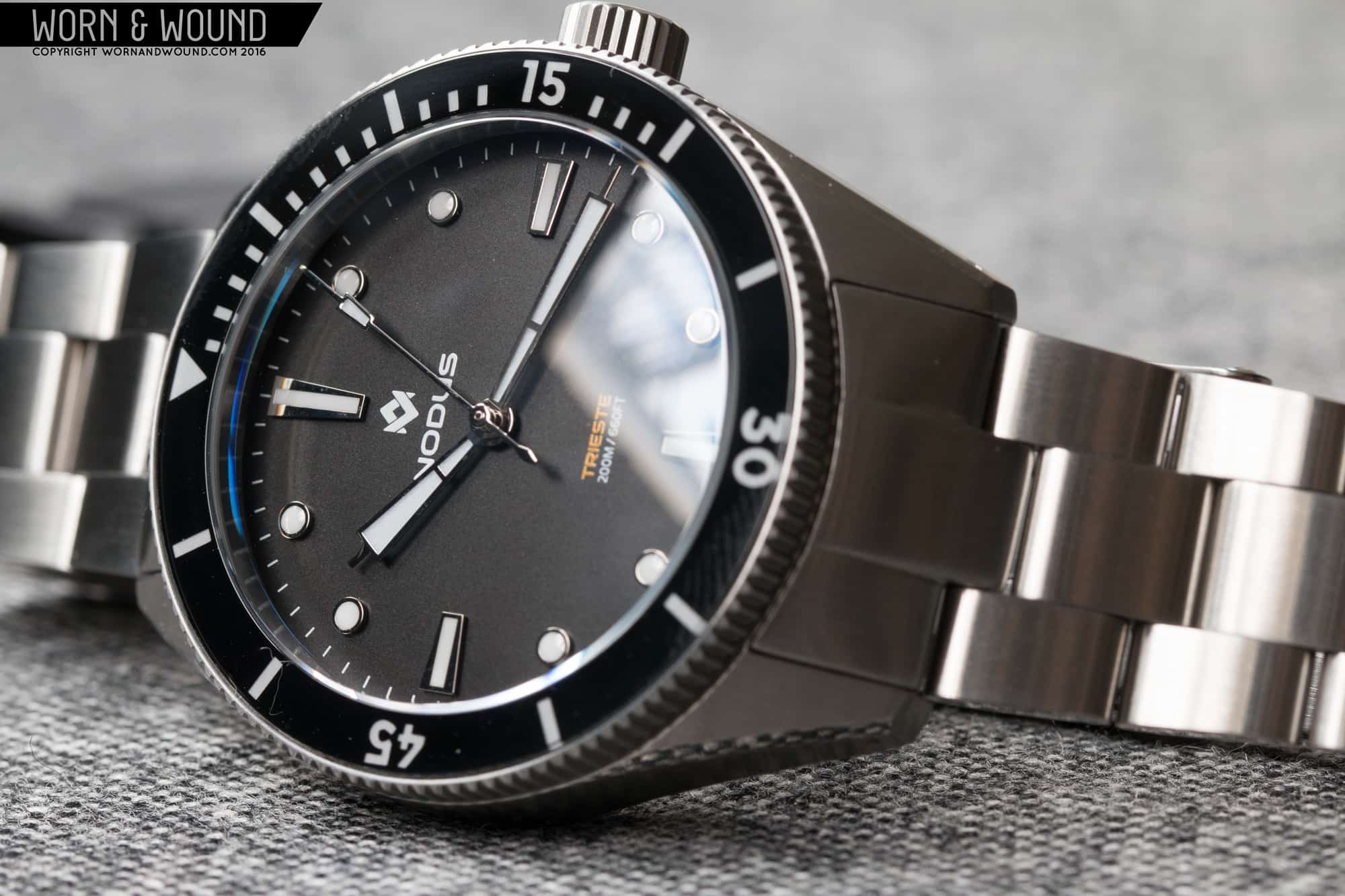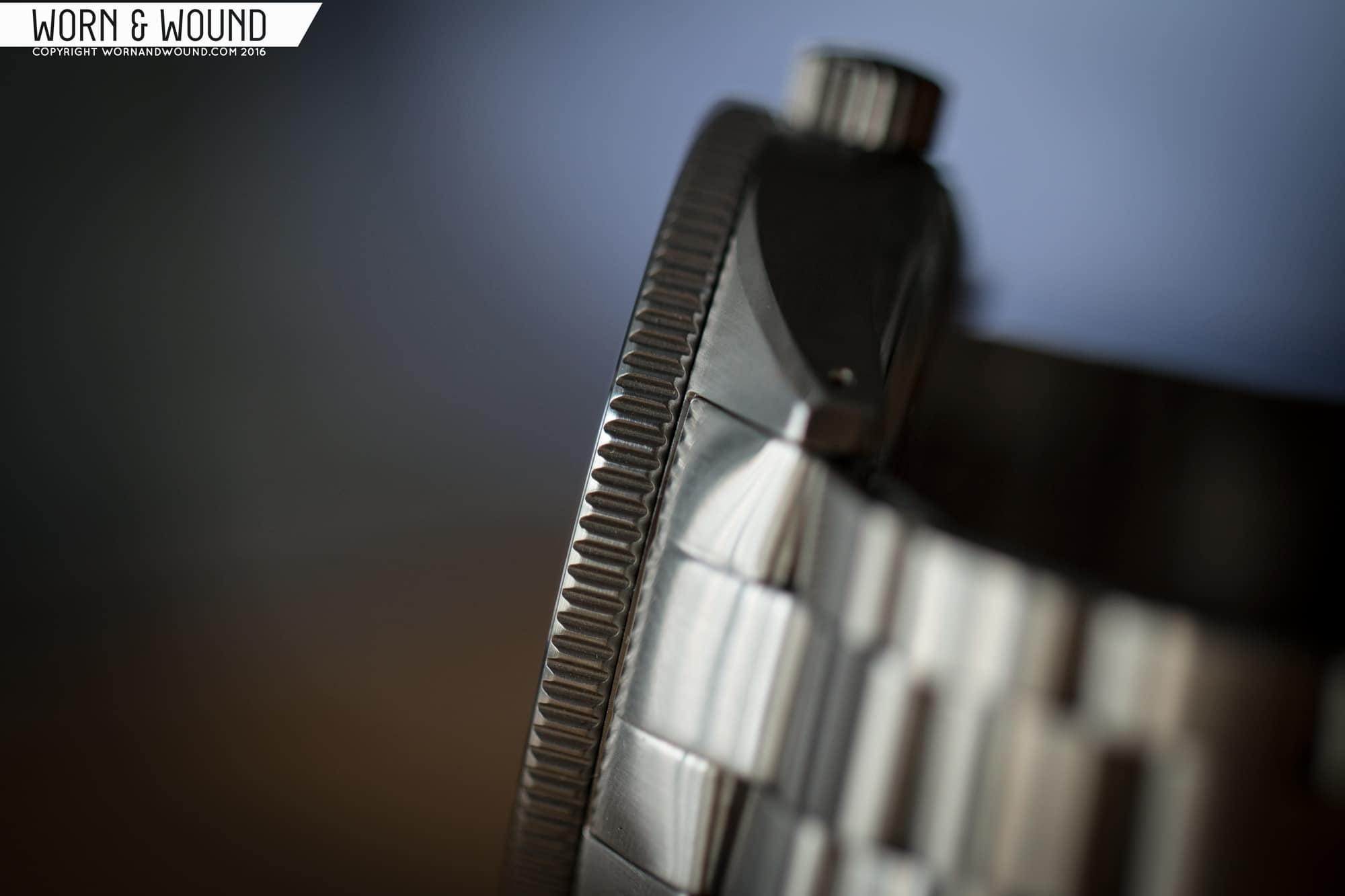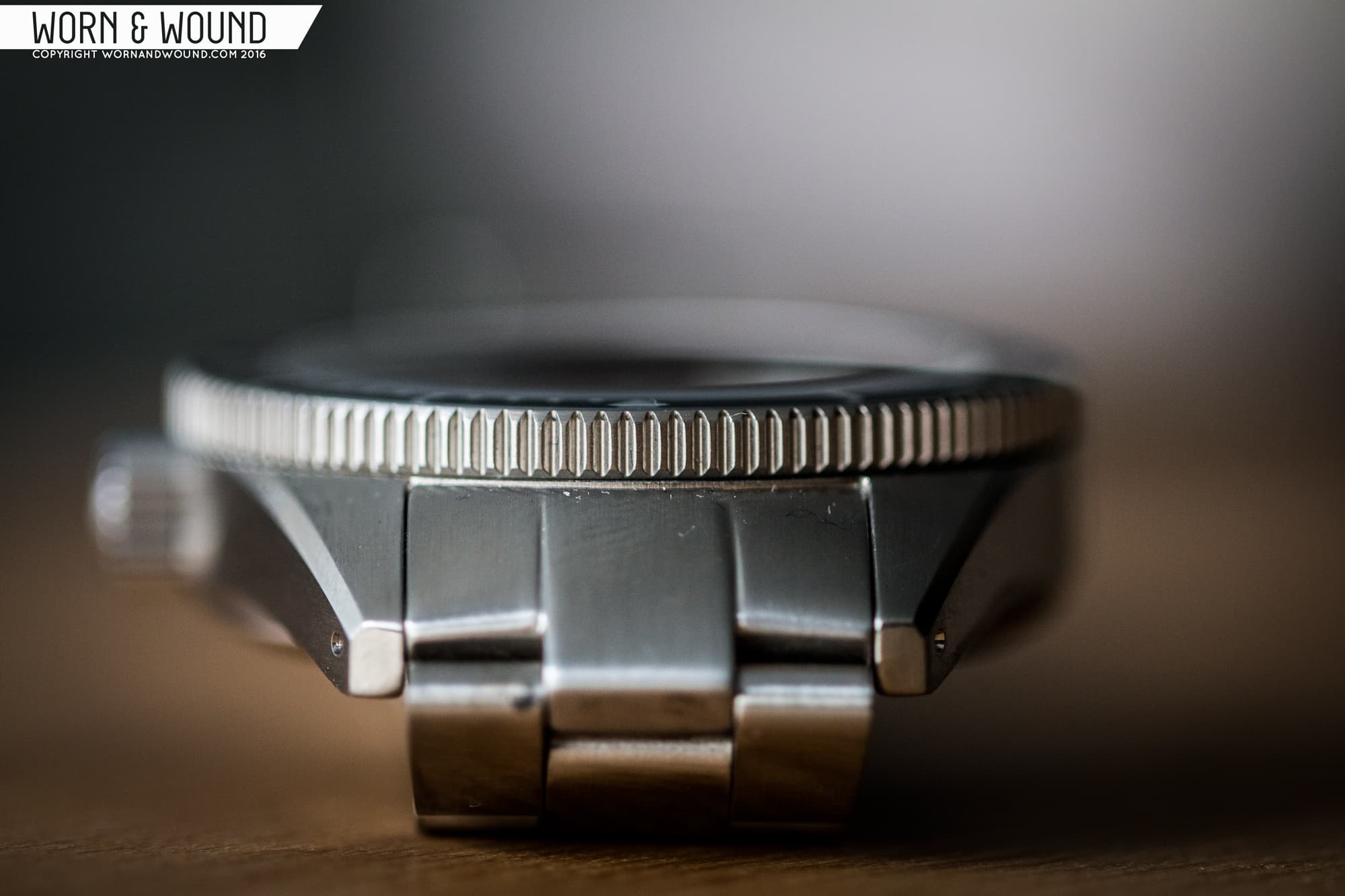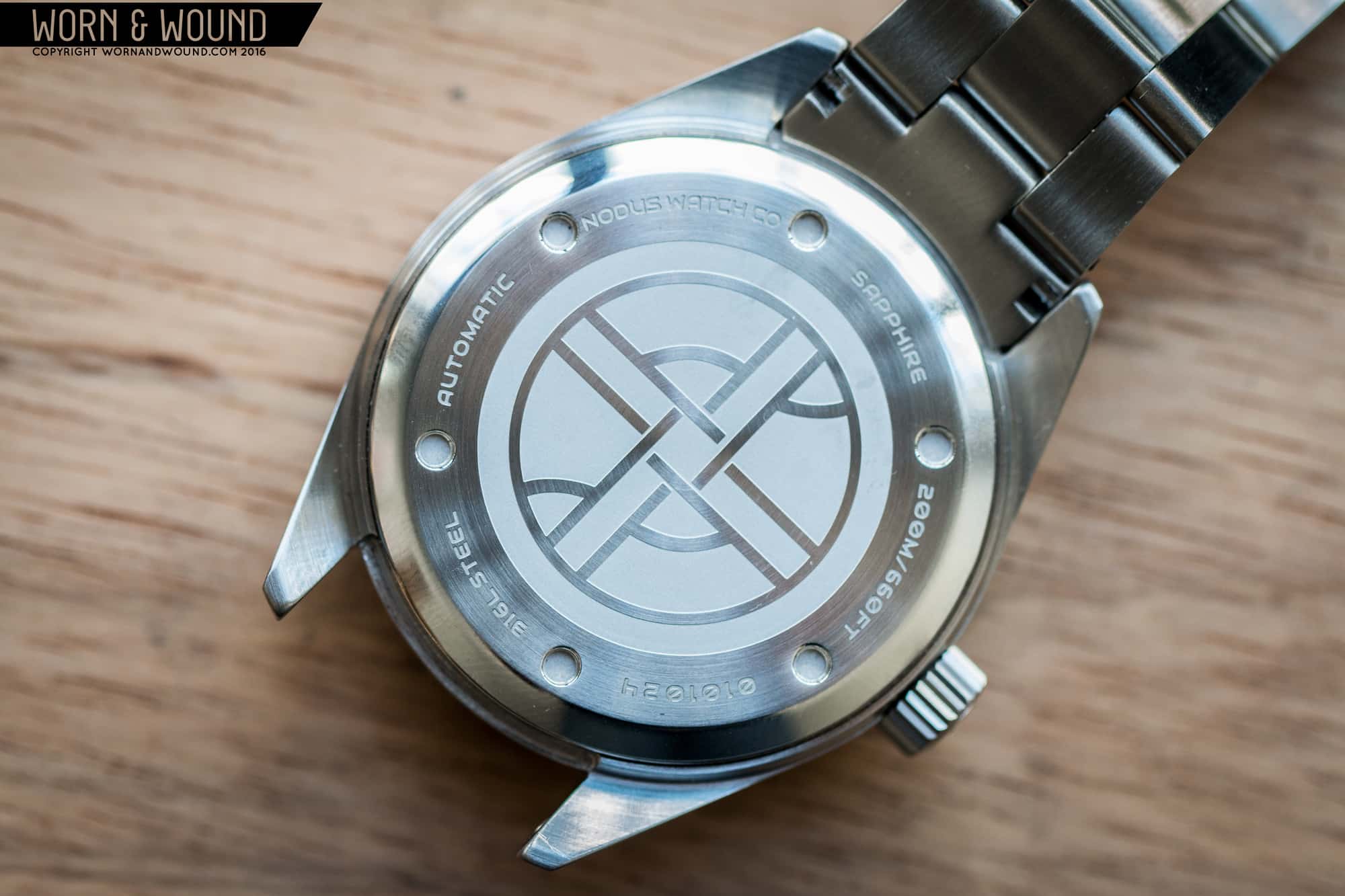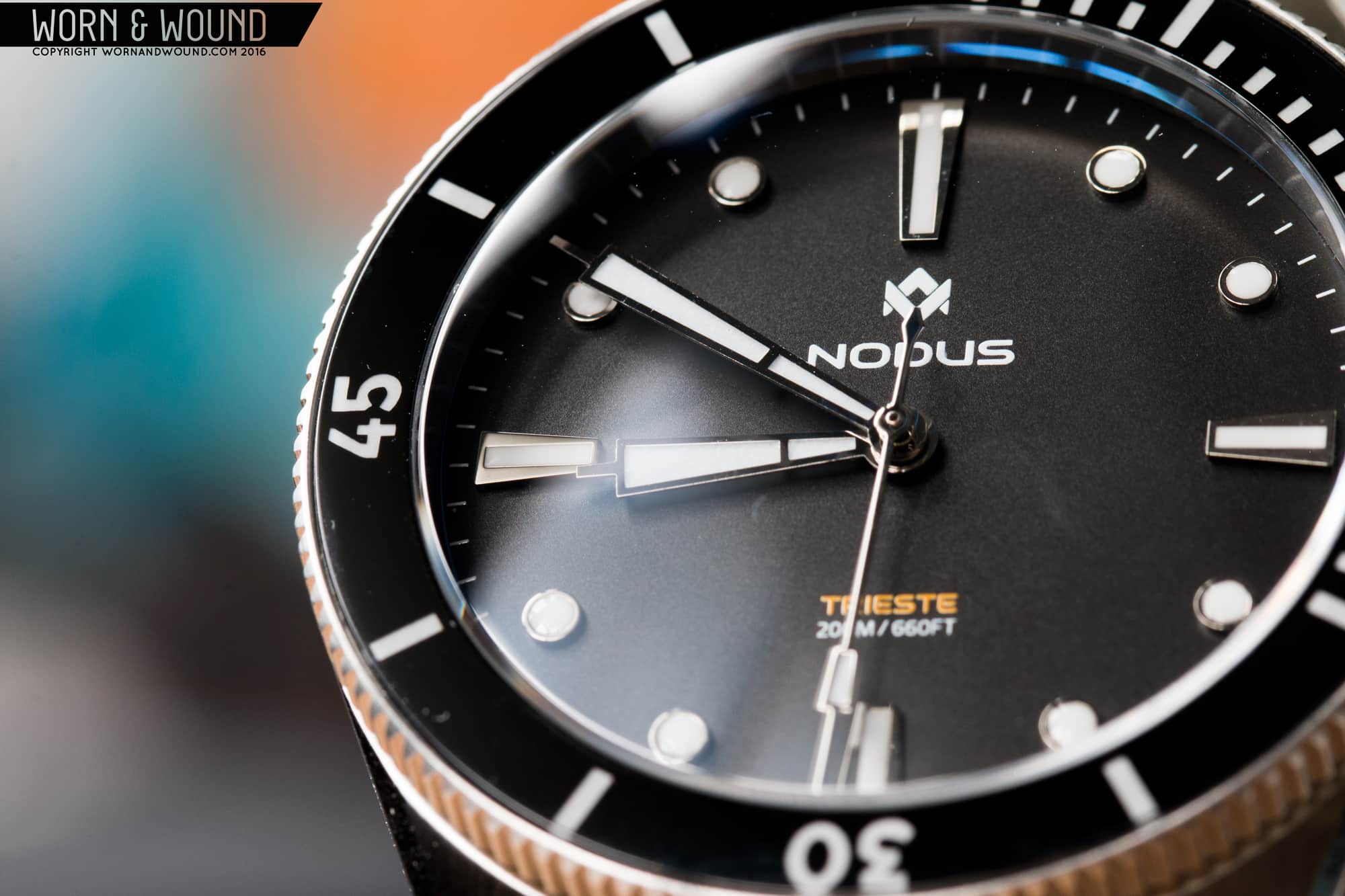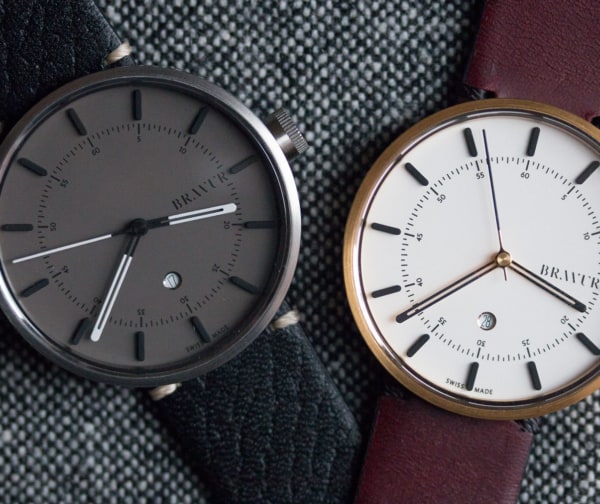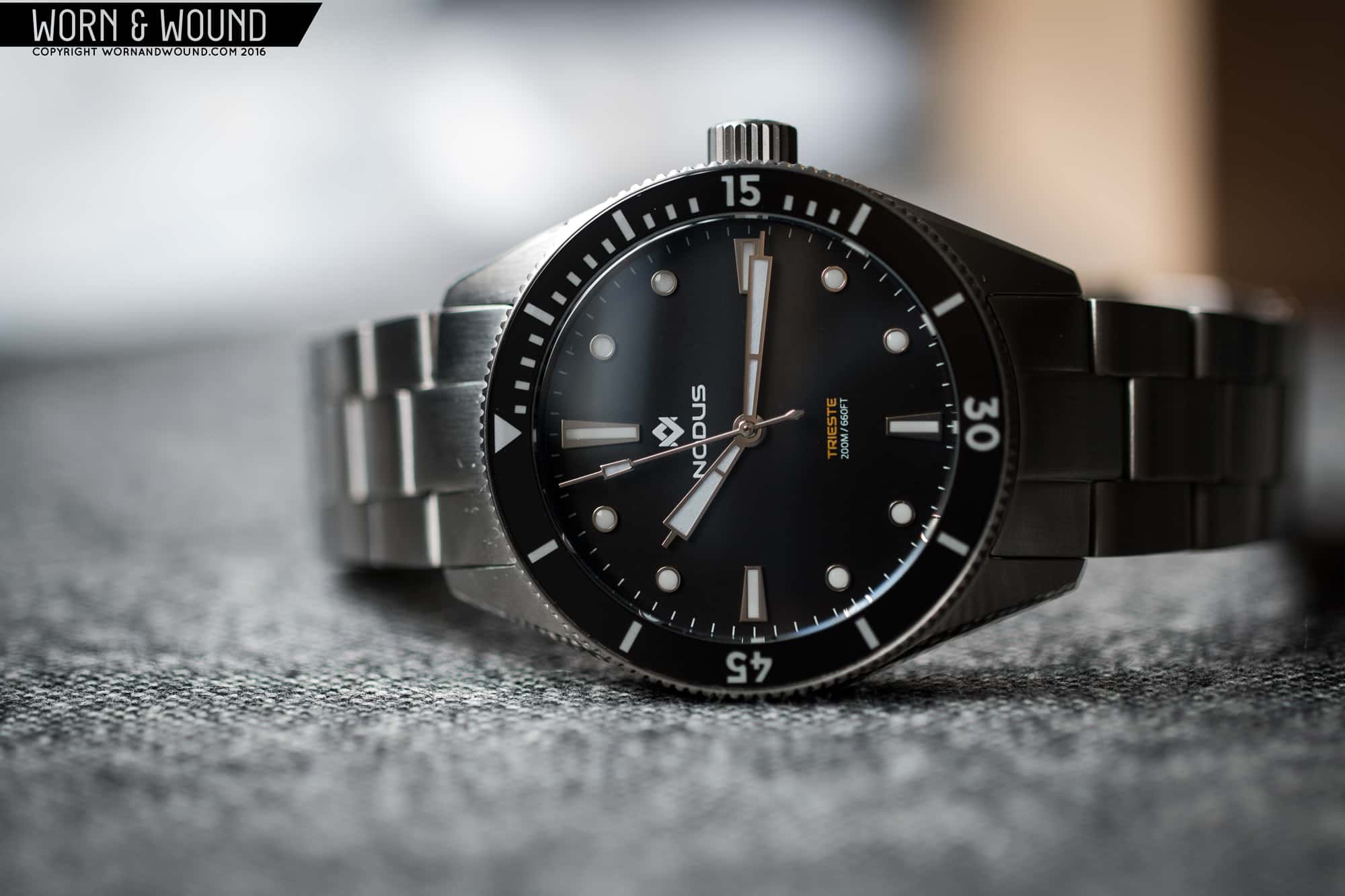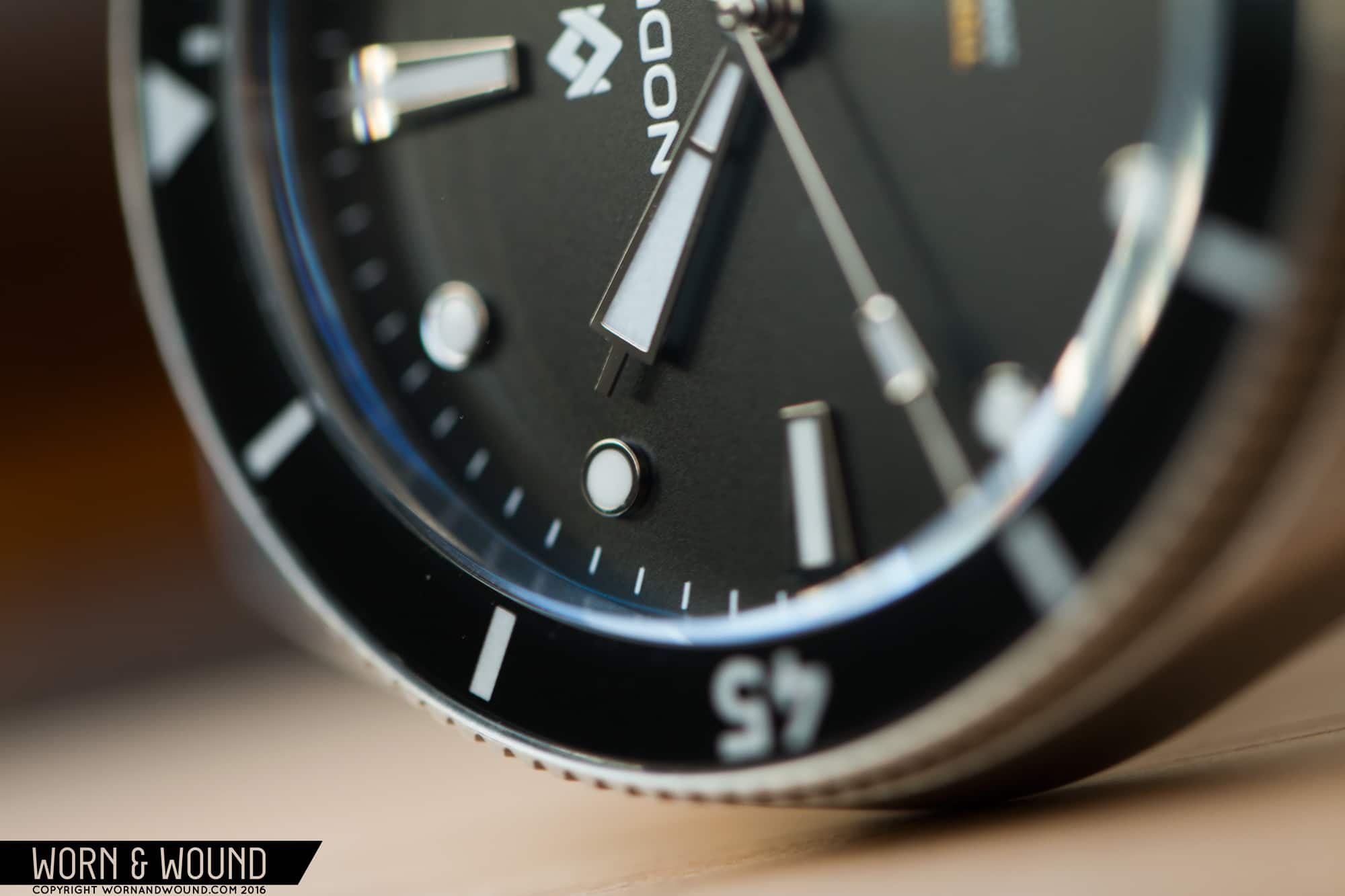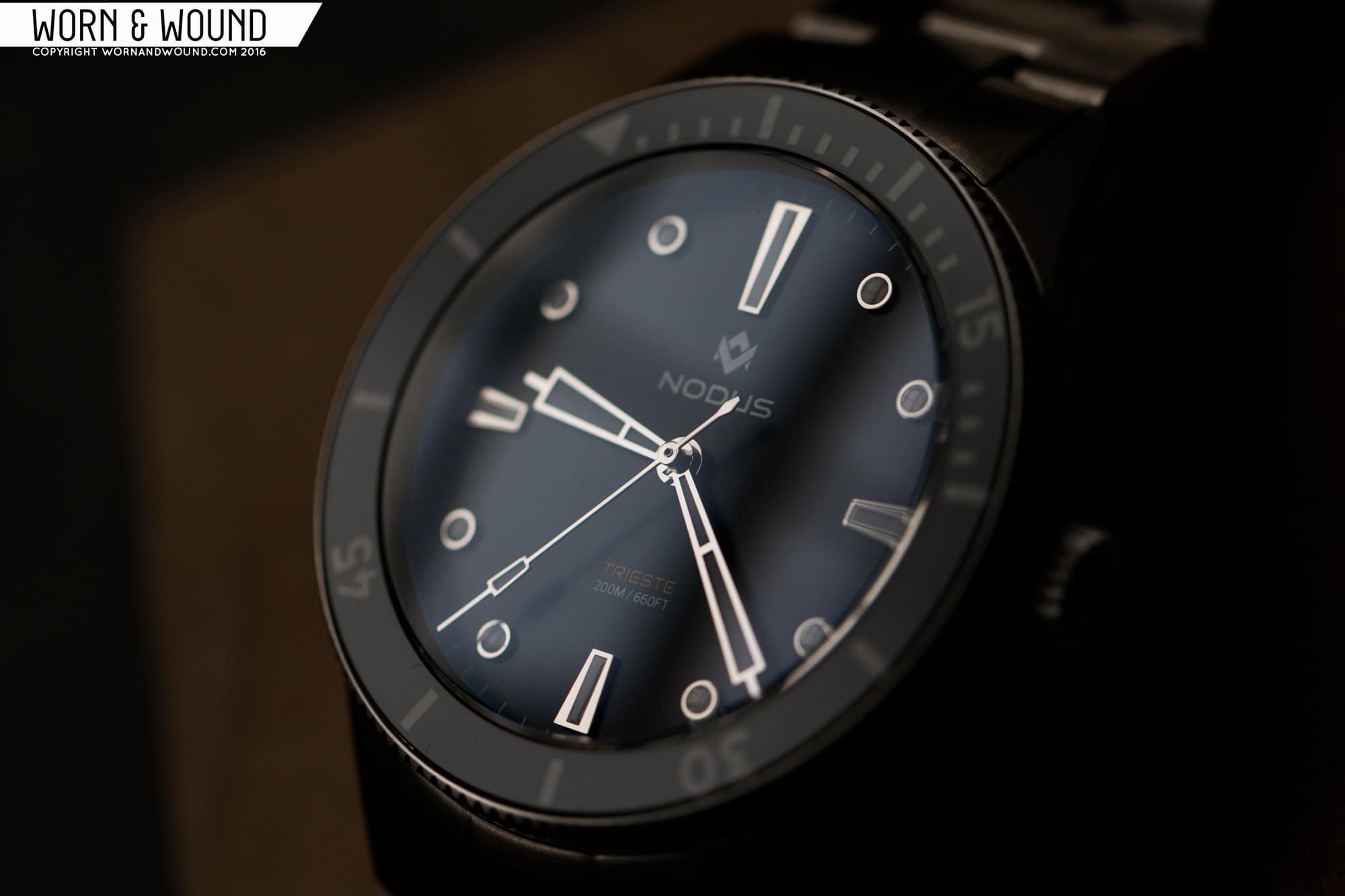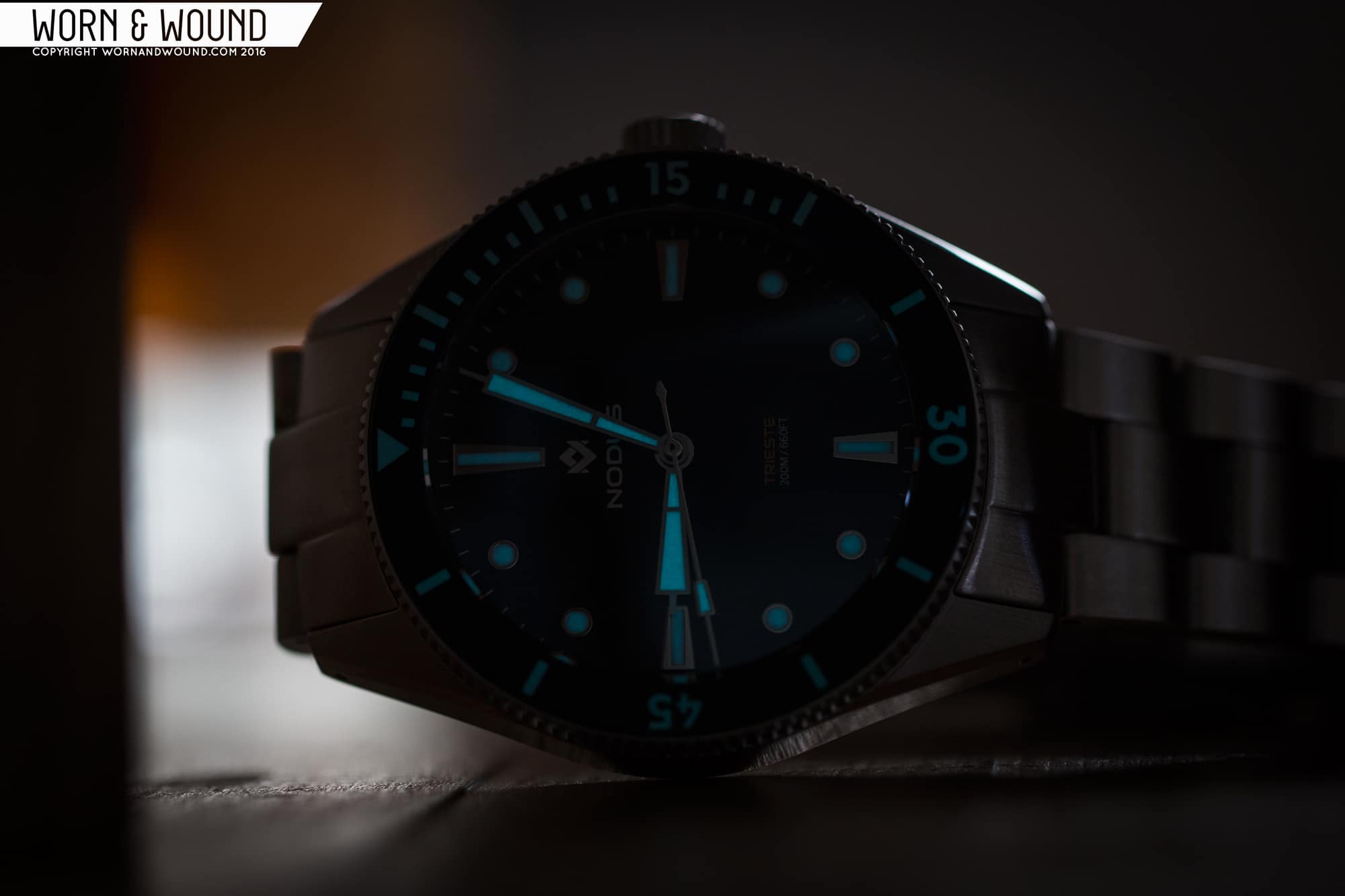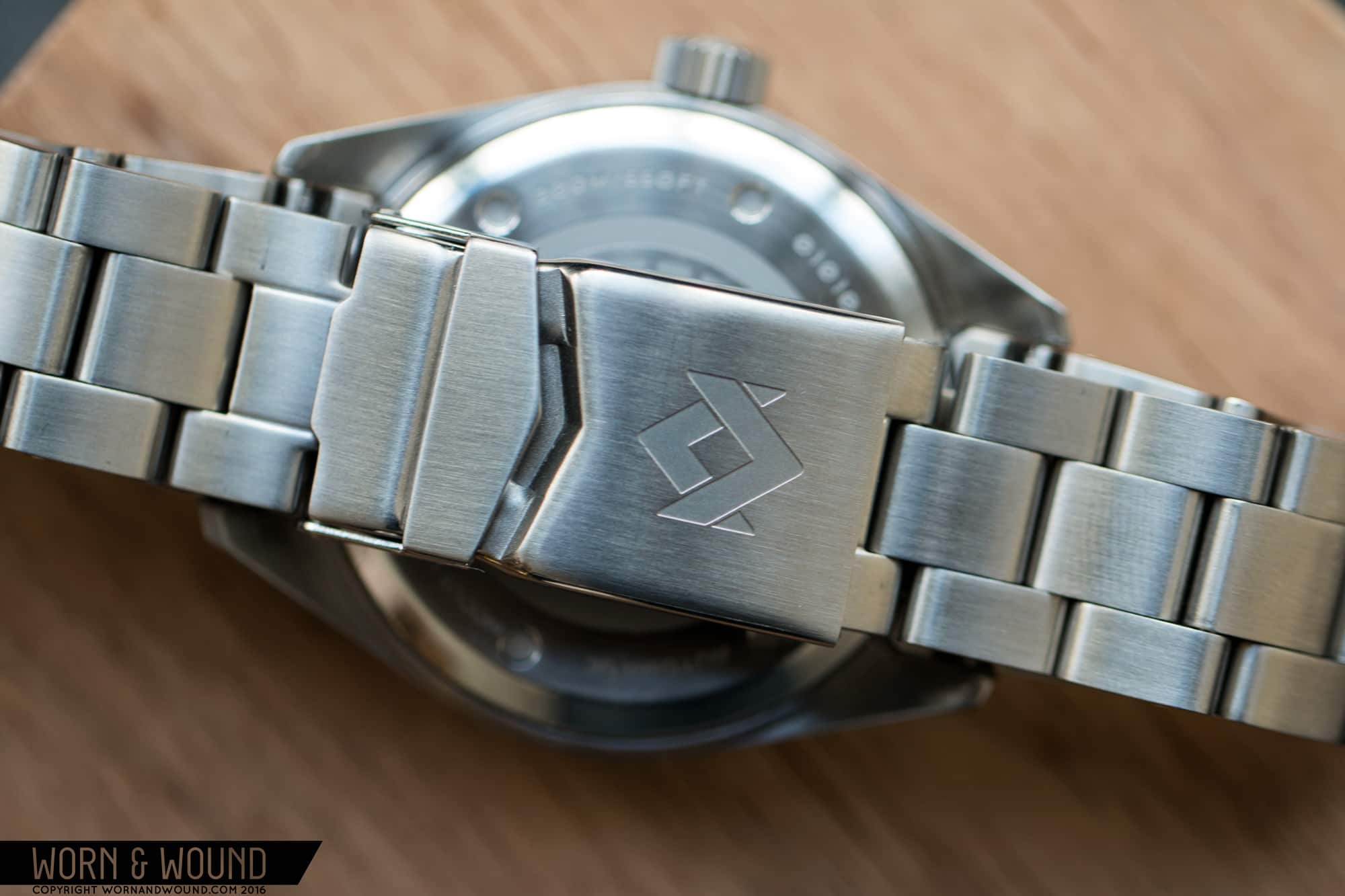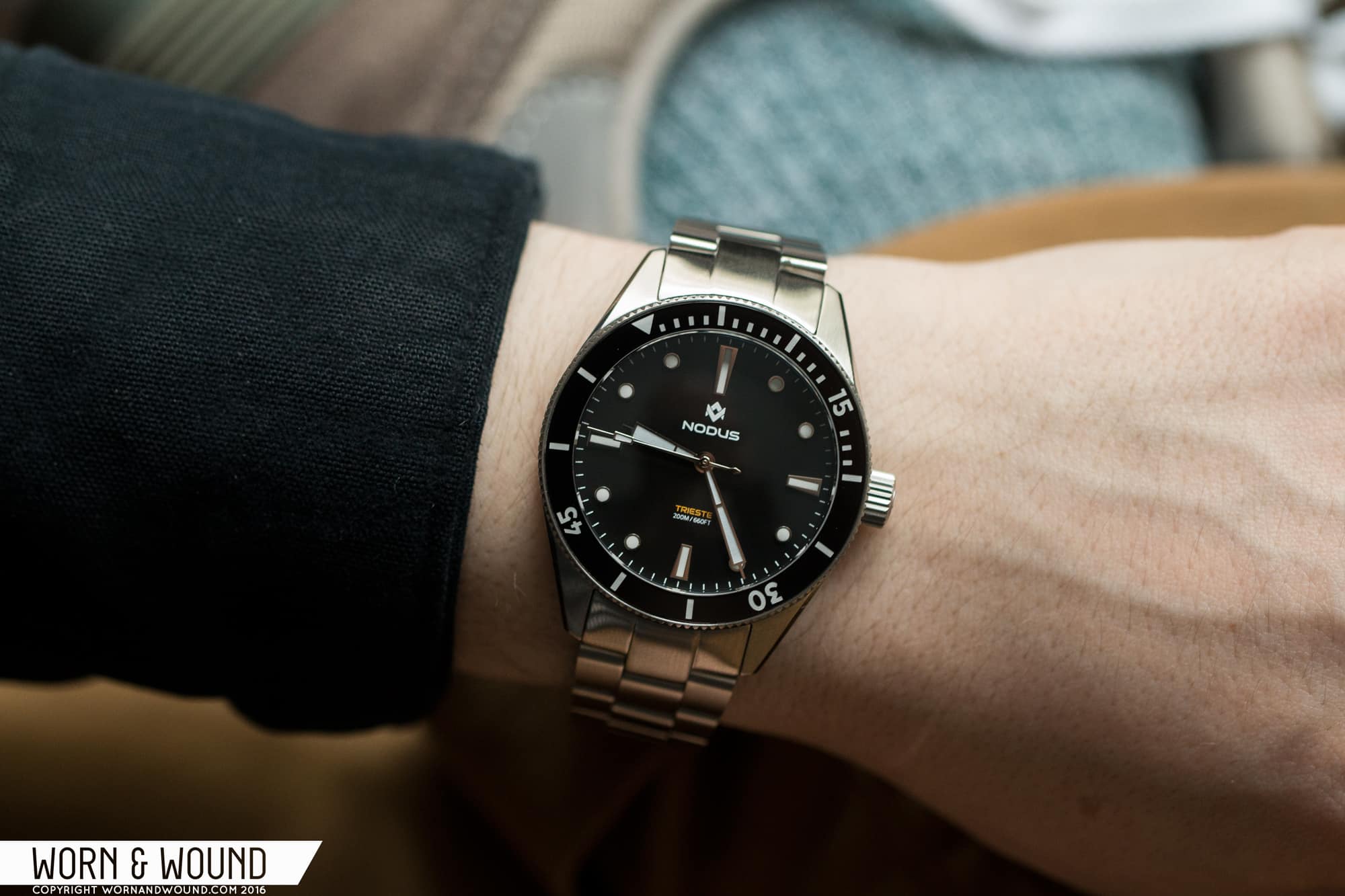Nodus is an up-and-coming, Los Angeles-based brand entering the ever-expanding field of micro-brand divers. Their premiere offering is the Trieste, named after the legendary 1960 Trieste Submersible expedition into the Mariana Trench. While at first glance, the Trieste may not inspire too many oohs and aahs, it is definitely a micro-diver that deserves a second look.
The micro-brand diver market is rife with massive, knuckle-dragger chunks-of-steel with depth ratings that would crush your skull, but the Trieste is a refreshing departure from this trend with its 41mm size and 200-meter depth rating. A few weeks back, Sean Lorentzen wrote an article about lightweight skin divers (if you haven’t done so yet, go check it out). In body and spirit, the Trieste definitely pulls a bit on the heritage of ’60s and ’70s-era skin divers (and it has a bit of the Blancpain Bathyscape in there, too). 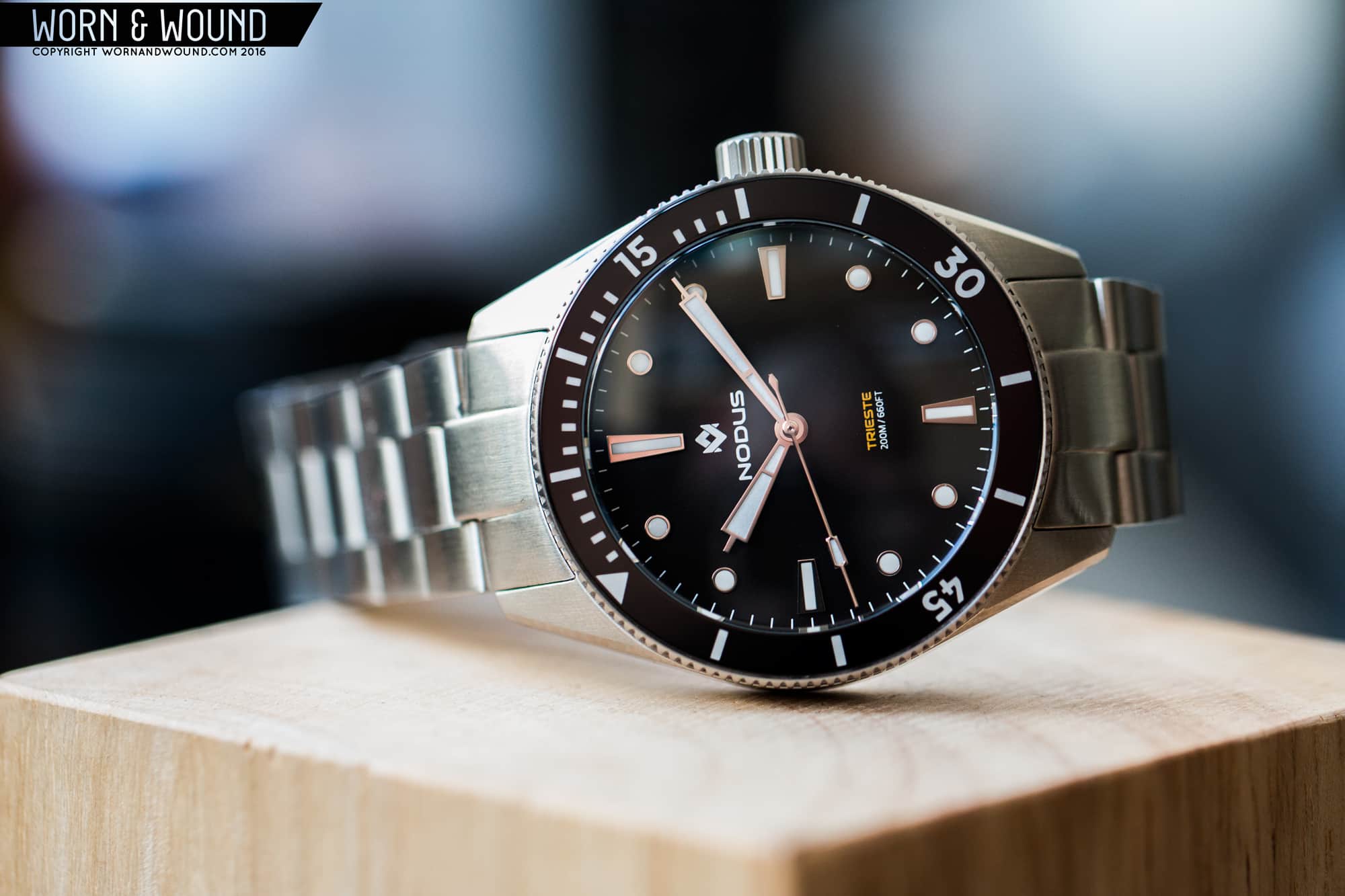 But all that aside, it’s also just a solid package of specs being offered at a reasonable and accessible price. Though the watches are assembled in Asia, final QC is done entirely in LA. That is, the Nodus team literally takes the watch apart and inspect all components, regulates the movements, and puts it all back together. For a watch that’s $500 (or less depending on the movement, but more on that later), that’s an exceptional level of care.
But all that aside, it’s also just a solid package of specs being offered at a reasonable and accessible price. Though the watches are assembled in Asia, final QC is done entirely in LA. That is, the Nodus team literally takes the watch apart and inspect all components, regulates the movements, and puts it all back together. For a watch that’s $500 (or less depending on the movement, but more on that later), that’s an exceptional level of care.
Let’s dive right in.









 Featured Videos
Featured Videos




